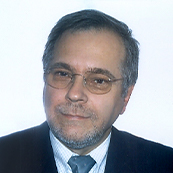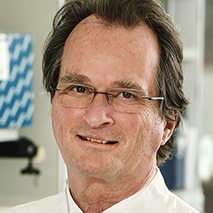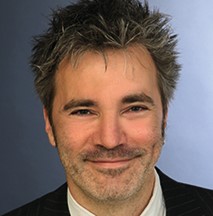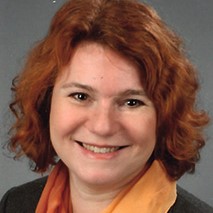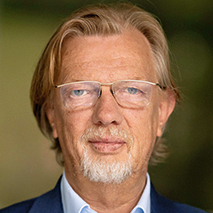Die Rolle des Paul-Ehrlich-Instituts im Transfusionswesen
Zusammenfassung
Das Paul-Ehrlich-Institut (PEI) hat für Blutprodukte im Dialog mit den Fachkreisen wissenschaftlich begründete und praxisgerechte Anforderungen entwickelt. Inzwischen konnten die veralteten „fi ktiven“ Zulassungen durch neue Zulassungen abgelöst werden, die den aktuellen hohen Qualitätsstandard der Transfusionsmedizin in Deutschland widerspiegeln. Weitere Tätigkeitsfelder des PEI sind Pharmakovigilanz/Hämo- und Gewebevigilanz, Genehmigung klinischer Prüfungen, Inspektionen, Erfassung der Meldungen zur Versorgungslage bei Blutprodukten, Mitwirkung in zahlreichen Gremien, Politikberatung sowie experimentelle Forschung mit Bezug zu Blutprodukten und anderen biomedizinischen Arzneimitteln. Eine neue Herausforderung ist die Genehmigung von Blutstammzellzubereitungen, die autolog oder gerichtet angewendet werden. Hämatopoetische Stammzellen werden auch als Ausgangsmaterial für Arzneimittel für neuartige Therapien nutzbar gemacht, deren Entwicklung im Rahmen klinischer Prüfungen derzeit intensiv vorangetrieben wird.
The Paul-Ehrlich-Institut (PEI) has developed in a dialogue with stakeholders scientifi cally sound and practice oriented requirements for blood products. In the meantime, outdated “virtual” licences could be replaced by new marketing authorizations, which refl ect the current high quality standard of transfusion medicine in Germany. Further areas of PEI activity are pharmacovigilance, haemovigilance and tissue vigilance, approval of clinical trials, inspections, collection of data concerning blood product supply, participation in numerous committees, counselling of health politicians, and experimental research related to blood products and other biomedical medicines. A new challenge is the approval of blood stem cell preparations for autologous or directed use. Haematopoietic stem cells are also used as starting material for advance therapy medicinal products, the development of which is currently intensively advanced in the context of clinical trials.
Die Rolle des Robert Koch-Instituts im Transfusionswesen
Zusammenfassung
Das Robert Koch-Institut (RKI) erhebt und bewertet infektionsepidemiologische Daten von Blutspendern als wichtiger Bestandteil eines Hämovigilanzsystems. Die Analyse von transfusionsrelevanten Infektionen in der Spenderpopulation liefert wichtige Hinweise für die Modifi kation von Spenderauswahl und -testkriterien. Über die Analyse der Meldedaten hinaus führt das RKI in Zusammenarbeit mit den Spendeeinrichtungen wichtige ergänzende epidemiologische Studien unter Blut- und Plasmaspendern durch. Weiterhin ist mit dem Arbeitskreis Blut ein wichtiges Expertengremium am Robert Koch-Institut angesiedelt, das Voten und Stellungnahmen zu aktuellen und wichtigen Themen der Transfusionsmedizin erarbeitet und die Behörden des Bundes und der Länder in Fragen der Transfusionssicherheit berät.
The Robert Koch Institute (RKI) collects and evaluates epidemiological data from blood and plasma donors as an important part of the haemovigilance system. The analysis of infections in the donor population can contribute to the modifi cation of donor selection criteria and screening algorithms. In addition to the mandatory epidemiological data, the RKI conducts important supplementary studies with blood and plasma donors. Furthermore, the National Advisory Committee “Blood” (Arbeitskreis Blut) is affi liated with the RKI. The experts of this committee publish recommendations and statements dealing with current and important topics and advise the national and federal health authorities in matters of transfusion safety concerning both infections transmitted by blood and safe blood supply.
Forschung in der Transfusionsmedizin in Deutschland:
Zusammenfassung
Nach hervorragenden Arbeiten einiger wissenschaftlich sehr aktiver transfusionsmedizinischer Arbeitsgruppen vor 1990 haben sich die Forschungsaktivitäten in der Transfusionsmedizin in den letzten 20 Jahren in Deutschland in besonderer Weise weiterentwickelt. Zum 50-jährigen Bestehen der Deutschen Gesellschaft für Transfusionsmedizin und Immunhämatologie (DGTI) im Jahre 2004 wurde anlässlich der Jahrestagung eine Übersicht über die damaligen Aktivitäten veröffentlicht, die auch den Stand der Forschung mit berücksichtigte (Müller et al., 2004). Das vorliegende Kapitel versucht, wichtige Aspekte dieser Entwicklung in Deutschland zusammenfassend anzusprechen, und darüber hinaus Ansätze und Wege zu zukünftigen Entwicklungen aufzuzeigen.
Research activities in the fi eld of Transfusion Medicine took a rapid development in the past 20 years. On occasion of the 50th Anniversary of the German Society for Transfusion Medicine and Immunohematology (DGTI) in the year 2004, an overview on the activities, including research in the fi eld of Transfusion Medicine has been published (Müller et al., 2004). This article gives an update on these research activities in Germany and tries to identify opportunities and challenges for the future role of Transfusion Medicine in Germany.
Molekulare Diagnostik und Pathophysiologie:
Zusammenfassung
Die Individualisierung der Medizin in Diagnostik und Therapie führt nicht zuletzt über eine adäquate Genomanalytik des Menschen. Die vorliegende Arbeit zeigt ohne Anspruch auf Vollständigkeit exemplarisch auf, in welchen Bereichen diese Analytik in der Transfusionsmedizin schon weitgehend Einzug gehalten hat. Am Beispiel der CDAII wird die genetische Ursachenforschung angeborener Defekte dargestellt. Die molekulare Diagnostik von Blutzellantigenen unterstützt und ergänzt die Blutgruppenserologie. Die molekulare Analyse von Faktoren der plasmatischen Gerinnung erlaubt eine exakte Differentialdiagnose von hämorrhagischen Diathesen und Thrombophilien und durch pharmakogenetische Erkenntnisse eine individuelle Therapiesteuerung.
An adequate human genome analysis will support individualized diagnostics and therapy in medicine. Without claiming any completeness, this report shows in which areas genomic analysis has already to a large extent infi ltrated transfusion medicine. With CDAII as a prototype, molecular research of inborn defi ciencies is exemplifi ed. The molecular analysis of the genes of blood cell antigens supports and complements blood group serology. The gene analysis of plasmatic coagulation components leads to exact differential diagnosis of hemorrhagic disorders and thrombophilia and to individualized therapy guided by pharmocogenetic knowledge.
Stammzellen und neuartige Zelltherapien
Zusammenfassung
Nachdem sich die Bereitstellung von Blutstammzellpräparaten zu einer Kernkompetenz vieler Blutspendedienste entwickelt hat, wurde die Entwicklung von Verfahren zur Herstellung und Anwendung neuartiger Zelltherapien vorangetrieben. In vielen Projekten stehen humane Blut- und Blutstammzellen im Vordergrund. Ausgehend von der klassischen Anwendung der Transplantation hämatopoetischer Stammzellen zur hämatopoetischen Rekonstitution werden optimierte Methoden zur Stammzellmobilisierung evaluiert. Zellen aus dem Knochenmark werden aber auch für andere Indikationen, z. B. für die Therapie von akutem Herzinfarkt, eingesetzt. Weiterhin werden andere Zelltypen, z. B. die mesenchymalen Stammzellen, als regenerative Therapie oder immunmodulatorische Therapie angewendet. Sobald diese Zellen substanziell bearbeitet werden oder nicht dazu bestimmt sind, im Empfänger im Wesentlichen dieselbe Funktion auszuüben wie im Spender, werden sie als „Arzneimittel für neuartige Therapien“ klassifiziert.
The provision of blood stem cell preparations has emerged as a key competence of many blood donor services. Based on this expertise, the development of procedures to manufacture and apply innovative cell therapies has been promoted. In a variety of protocols blood or blood stem cells are key cell types under investigation. Although already routine application, methods are optimised to mobilize blood stem cells to promote hematopoietic reconstitution. Furthermore, cells derived from the bone marrow are investigated for other indications, for example treatment of acute myocardial infarction. Other cell types, like mesenchymal stem cells are employed in regenerative therapies or immune therapies. In case, cell types are substantially manipulated or not intended to be used for the same essential function in the recipient as in the donor these novel cell therapies are classifi ed as Advanced Therapy Medicinal Products.
Die Blutspendedienste des Deutschen Roten Kreuzes in der Bundesrepublik Deutschland:
Zusammenfassung
Umfragen zeigen, dass die Blutspende bei 90 % der Befragten in Deutschland mit dem Deutschen Roten Kreuz (DRK) in Verbindung gebracht wird. Unter den Aufgabenfeldern, die von befragten Bürgern spontan dem DRK zugeschrieben werden, wird die Blutspende an erster Stelle genannt. Das DRK spielt in der sicheren und gesicherten Versorgung der Bundesrepublik Deutschland seit 1952 eine beispielhafte und anerkannte Rolle. Die DRK-Blutspendedienste als Einrichtungen des Deutschen Roten Kreuzes in Trägerschaft der DRK-Landesverbände handeln nach den Grundsätzen und Leitlinien des Roten Kreuzes. Der Ethische Kodex bildet das Fundament für die freiwillige und unentgeltliche Vollblutspende beim DRK. Die freiwilligen und unentgeltlichen Vollblutspenden von jährlich etwa zwei Millionen Spenderinnen und Spendern und der Einsatz von etwa 200.000 ehrenamtlichen Helferinnen und Helfern bei der Vorbereitung und Durchführung von Blutspendeterminen sind ein aktiver Beitrag zur Senkung der Kosten im Gesundheitswesen, der die Versichertengemeinschaft jährlich um mehrere Hundert Millionen Euro entlastet.
Opinion polls show that, 90 % of those asked connect blood donations with the German Red Cross. Amongst the task fi elds which are attributed to the DRK by the persons asked, blood donations were put at the top of the list. The DRK has played an exemplary and recognised role in safe and secured supply to the Federal Republic of Germany since 1952. The DRK blood donation services, as institutions of the German Red Cross sponsored by the DRK state associations, act in accordance with the principles and guidelines of the Red Cross. The Ethical Codex forms the foundation for voluntary and non-remunerative whole blood donations at the DRK. Voluntary and non-remunerative whole blood donations by annually around two million donors and the commitment of around 200,000 honorary helpers in the preparation and execution of blood donation dates are an active contribution to the reduction of costs in the health system relieving the insured persons community each year by several hundred million euros.
Thrombozyten-Transfusionen
Zusammenfassung
Im Herbst 2008 erschienen die neuen „Querschnitts-Leitlinien zur Therapie mit Blutkomponenten und Plasmaderivaten“, welche von der Bundesärztekammer auf Empfehlung ihres wissenschaftlichen Beirates herausgegeben werden (1). Die Querschnitts-Leitlinien beschäftigen sich im zweiten Kapitel mit den Thrombozytenkonzentraten. In diesem Beitrag werden einige Aspekte aus den Querschnittsleitlinien vor dem Hintergrund aktueller Entwicklungen und neuer Literatur kommentiert, insbesondere werden Fragen zur Haltbarkeit, Indikationsstellung, Dosierung und Präparateauswahl aufgegriffen.
In autumn 2008, the new edition of the „CrossSectional Guidelines for Therapy with Blood Components and Plasma Derivatives“ appeared, which are published by the Board of the German Medical Association on the recommendation of the Scientifi c Advisory Board (1). In the meantime, an English version of these Guidelines is available, too (2). The second chapter of these Guidelines presents evidence and recommendation for the use of platelet concentrates. In this article, we comment on some aspects of the Guidelines taking into account new developments and recently published data. In particular we address the issues of shelf life, indication, dosing and selection of platelet product type.
Nebenwirkungen bei der Anwendung von Blutprodukten
Zusammenfassung
Der vorliegende Artikel fokussiert auf Nebenwirkungen durch Blutprodukte. Gegenwärtig besteht ein Restinfektionsrisiko für bakterielle Kontamination bei Thrombozytenkonzentraten von 1:1.428 und für schwere septische Erkrankungen bei ca. 1:50.000. Während einige Länder ein Spenderscreening mit Hilfe von Kulturmethoden eingeführt haben, wurde in Deutschland die Haltbarkeit der Thrombozytenkonzentrate von 5 Tage auf 4 Tage reduziert. Durch die Einführung von Realtime-PCR Methoden konnte das Risiko für transfusionsrelevante Viruserkrankungen z. B. für HCV auf 1:11 Millionen reduziert werden. Das Risiko für eine TRALI wird gegenwärtig mit 1:65.000 für Plasmaprodukte und 1:2,26 Millionen für Erythrozytenkonzentrate angegeben und ist damit vergleichbar zu dem Restinfektionsrisiko für schwerwiegende bakterielle Kontaminationen.
The article focuses on side effects from blood products. Currently, the residual risk for bacterial transmissions in platelet concentrates and severe septic diseases consists of 1:1,428 and approximately 1:50,000, respectively. While some countries have implemented bacterial blood donor screening programs, the shelf-life of platelet concentrates was reduced from 5 days to 4 days in Germany. With the introduction of real-time PCR methods the risk of transfusion transmitted infections such as HCV could be reduced to 1:11 million. The risk of TRALI is currently 1:65,000 and 1:2.26 million for plasma products and red cell concentrates, respectively, which is comparable to the residual risk for serious bacterial contaminations.









